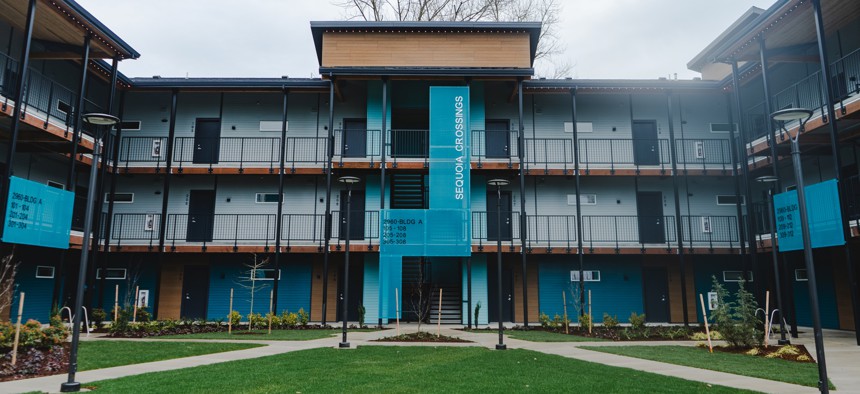Federal tax bill: What it could mean for affordable housing

Sequoia Crossings, an affordable housing development in Salem, Oregon. Photo courtesy of Oregon Housing and Community Services
COMMENTARY | Proposed federal tax incentives can make a huge difference in helping states like Oregon address the housing crisis.
Last year, I had the honor of testifying before one of the most powerful committees in the U.S. Congress, the Senate Finance Committee. The subject was America’s affordable housing crisis and how federal tax incentives can help communities address it.
I’m pleased to see that the proposed federal tax bill includes an increase to the Low-Income Housing Tax Credit by 12.5% through 2025 and a decrease to the Private Activity Bond financing threshold to 30% for projects financing by bonds with an issue date before 2026. The tax credit helps housing finance agencies to build affordable housing, and the bond financing allows developers access to lower financing costs of tax-exempt municipal bonds.
Particularly important for Oregon, the deal would make a technical change effectively allowing the state to finance far more of the construction of affordable rental housing that relies on both the Housing Credit and multifamily Housing Bonds.
This housing is urgently necessary because Oregon, like almost every other state, has a rapidly worsening deficit of homes that working folks, seniors and the unhoused can afford.
Oregon is more than half-a-million homes short of the demand to address the current shortage and projected 20-year need, according to the most recent estimates. More than half of renters cannot afford essentials like food and childcare after paying for their housing. Homelessness is up more than 20% in the last few years, more than any other state besides California.
I am proud that our state has stepped up, providing a historic level of funding to start meeting these needs. Gov. Tina Kotek is pushing to build 36,000 units a year. But we cannot do it alone.
The Housing Credit program, which my agency administers in Oregon, is the essential federal complement to the state’s efforts. Since the inception of the program, it’s been used to finance the construction and rehabilitation of over 52,000 affordable homes in every part of the state.
Without the federal 4% Low-Income Housing Tax Credit and Private Activity Bonds to leverage state resources, it would be nearly impossible for homes like Sequoia Crossings in Salem, Oregon to exist. The affordable housing development that is 100% permanent supportive housing will offer 60 homes for families and individuals experiencing chronic homelessness.
However, financing for projects with nearly 2,000 units of housing will not be able to move forward into construction this year because the Private Activity Bond resources are not available. At a time of housing crisis, this puts Oregon’s response further behind.
In addition to supporting more construction, the Housing Credit is essential for taking care of existing housing stock. Preserving the conditions and livability of the affordable housing we invest in is how we take care of our community and steward a healthy economy.
By restoring the 12.5% to the Low-Income Housing Tax Credit and lowering bond financing threshold, Oregon would likely double production of affordable housing over the next two years. The longer the current projects are delayed, the more they will be impacted by market forces that increase the cost of both up-front development and long-term operations.
I urge Congress to get a tax deal done this year that includes these essential housing priorities. If it doesn’t happen soon, it may be years before another opportunity presents itself.
Editor's note: This piece was changed Jan. 31 to more succinctly describe the Sequoia Crossings housing development.
Andrea Bell is the executive director of Oregon Housing and Community Services, where she oversees the strategic direction, vision and growth of the state agency responsible for providing stable and affordable housing across Oregon.





